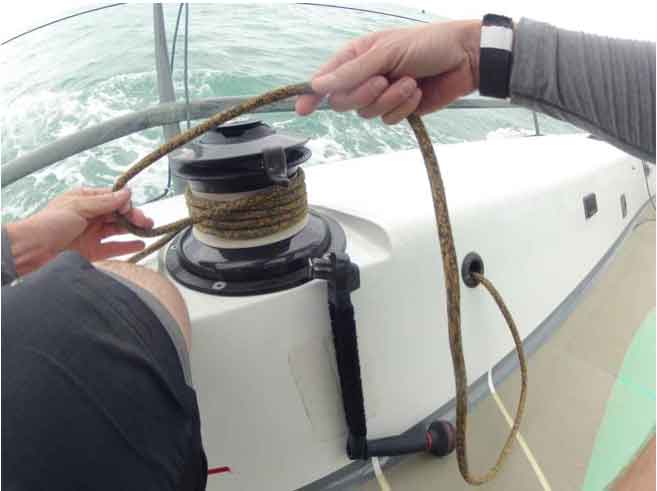From Sailing World.

In general, start with two wraps on the winch. If you’re using small diameter line, or the breeze picks up, add more wraps. Photo by Quantum Racing
Loading a winch in the correct direction is the first step. Many big-name sailors have fallen victim to this. If there’s any doubt, especially if your boat has counter-rotating winches, put arrows on the top of the winch or on the deck around the base of the winch. It may not look cool, but neither is putting turns on incorrectly.
It’s important that the sheet is led to the winch at the correct height. If it’s too low, it can slip down the drum, and if it’s too high, it can lead to regular overrides. The winch manufacturer can provide a drawing with the ideal angle for the lead.
The number of wraps you start with is really a function of rope diameter, drum diameter, and drum surface quality. Smaller-diameter line may require more wraps to prevent the line from slipping on the drum. In general, though, two wraps is a good starting point, and as load increases, you can add more.
Don’t be surprised if, for example, the jib winch requires two wraps on one side and three on the other. The way the winches load, you gain or lose half of a wrap because of where the line starts and finishes on the winch. And with sheets moving at high speed, make sure there’s no slack in the lazy sheet before you start pulling because you can easily end up with an override.